Avro Lancaster: Britain’s Most-Celebrated Heavy Bomber

On April 17, 1942, the Royal Air Force (RAF) carried out a daytime low-level raid against Nazi Germany, striking the MAN diesel factory in Augsburg, Bavaria. Though the RAF suffered high casualties in the World War II bombing raid, it signaled that the Allies could strike industrial targets deep within the Third Reich. It also showcased the capabilities of Bomber Command’s newest and heaviest bomber.
The attack was carried out by No. 44 and No. 97 Squadrons, the first units to operate the newly introduced Avro Lancaster, a four-engine bomber that would serve as the backbone of the RAF’s night assault on Germany. Able to carry a larger bomb-load than any other bomber in the European Theater during the Second World War, it proved to be a formidable fighting machine.
The Lancaster was further employed to carry out Operation Chastise, commonly known as the Dambusters Raid, in May 1943. The heavy bomber was later utilized in a series of high-profile bombing missions against the Kriegsmarine battleship Tirpitz, ultimately sinking the famed warship.
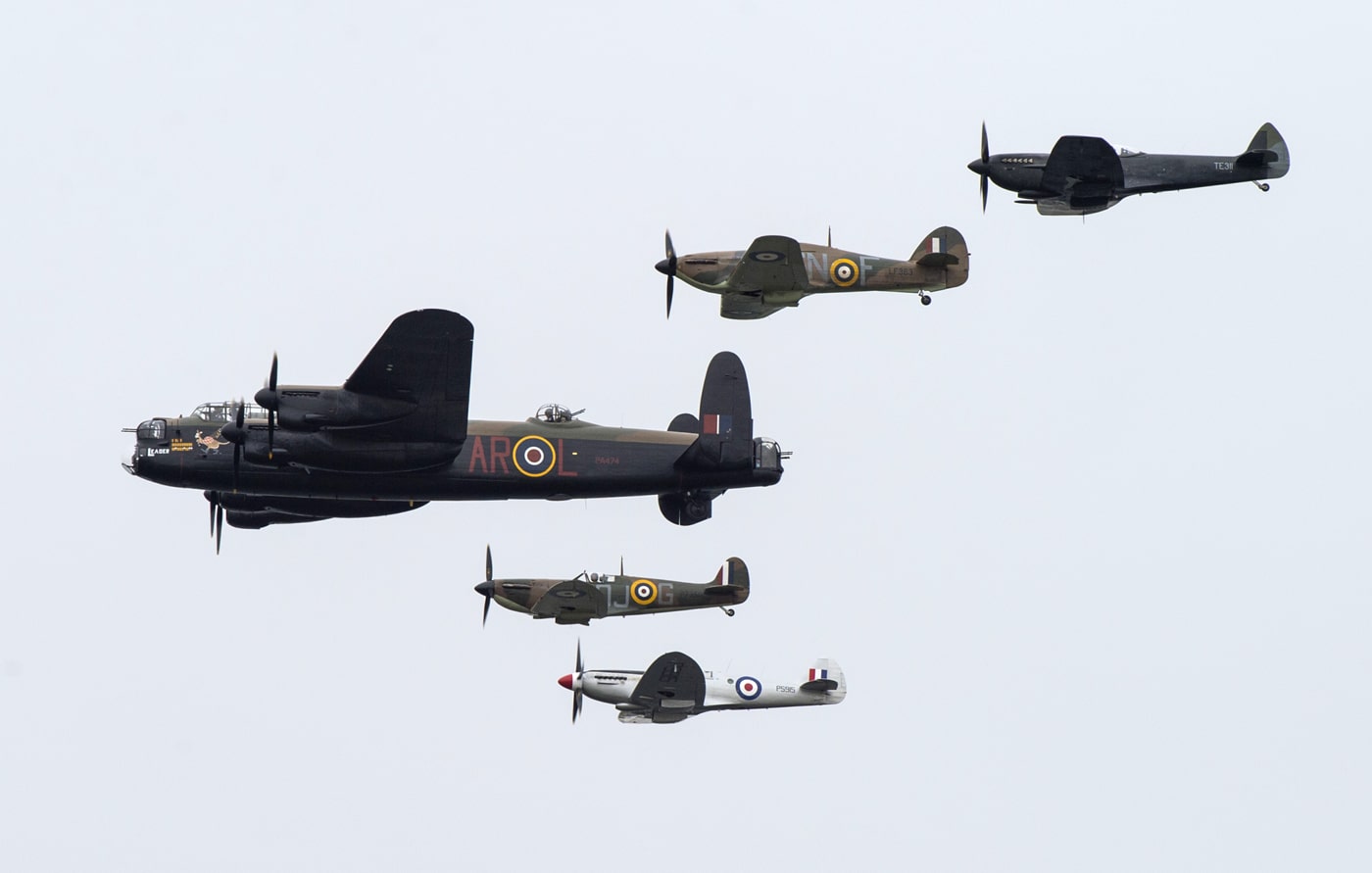
Although 7,377 were produced, only 17 remain, with just two still being airworthy.
Enter the Manchester
The Lancaster story actually begins with an aircraft named for a different English city, namely Manchester. The Avro 679 Manchester was developed in the years leading up to the Second World War, when few could have imagined the pivotal role that bombers would play in the war. The result was a twin-engine aircraft that only had its maiden flight on July 25, 1939, barely over a month before Germany invaded Poland and ignited the largest conflict the world was ever to see.

Following a second flight in May 1940, the Air Ministry ordered 200.
On paper, the Manchester was likely seen as just the bomber the UK needed as the Battle of Britain began. However, it was not a success, to say the least, plagued by reliability issues with its underpowered Rolls-Royce Vulture engines. The problem proved so great that by mid-1942, the Manchester was retired from combat service after just 18 months of service.
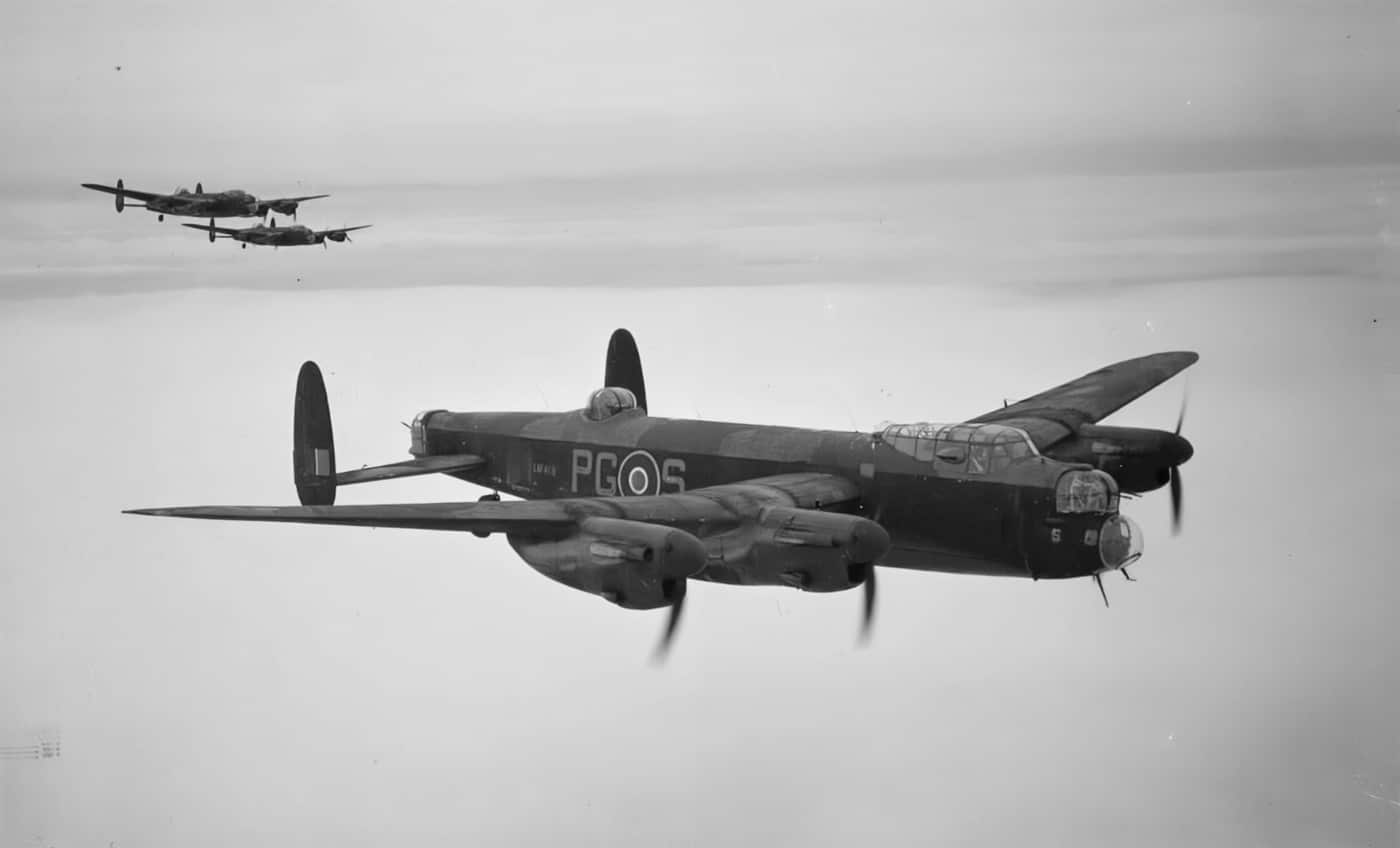
That could have been the end of the story, but to paraphrase British Prime Minister Winston Churchill (describing the Allied landings in North Africa at the end of that same year), it wasn’t even the beginning of the end, but rather the end of the beginning. Even as the development of Manchester was being finalized, Avro began work on what was to become the Lancaster.
An Evolutionary Bomber
It would be unfair to suggest that the Lancaster, despite its wartime accomplishments, was the result of a revolutionary design. Instead, it was a very successful evolution, one that improved on the failures of the Manchester. The Lancaster prototype, developed by Avro chief designer Roy Chadwick, even began as the Manchester Mk III. It utilized a number of Manchester Mk I components, including the fuselage, center section, and tail, as well as the nose, tail, and mid-upper gun turrets.
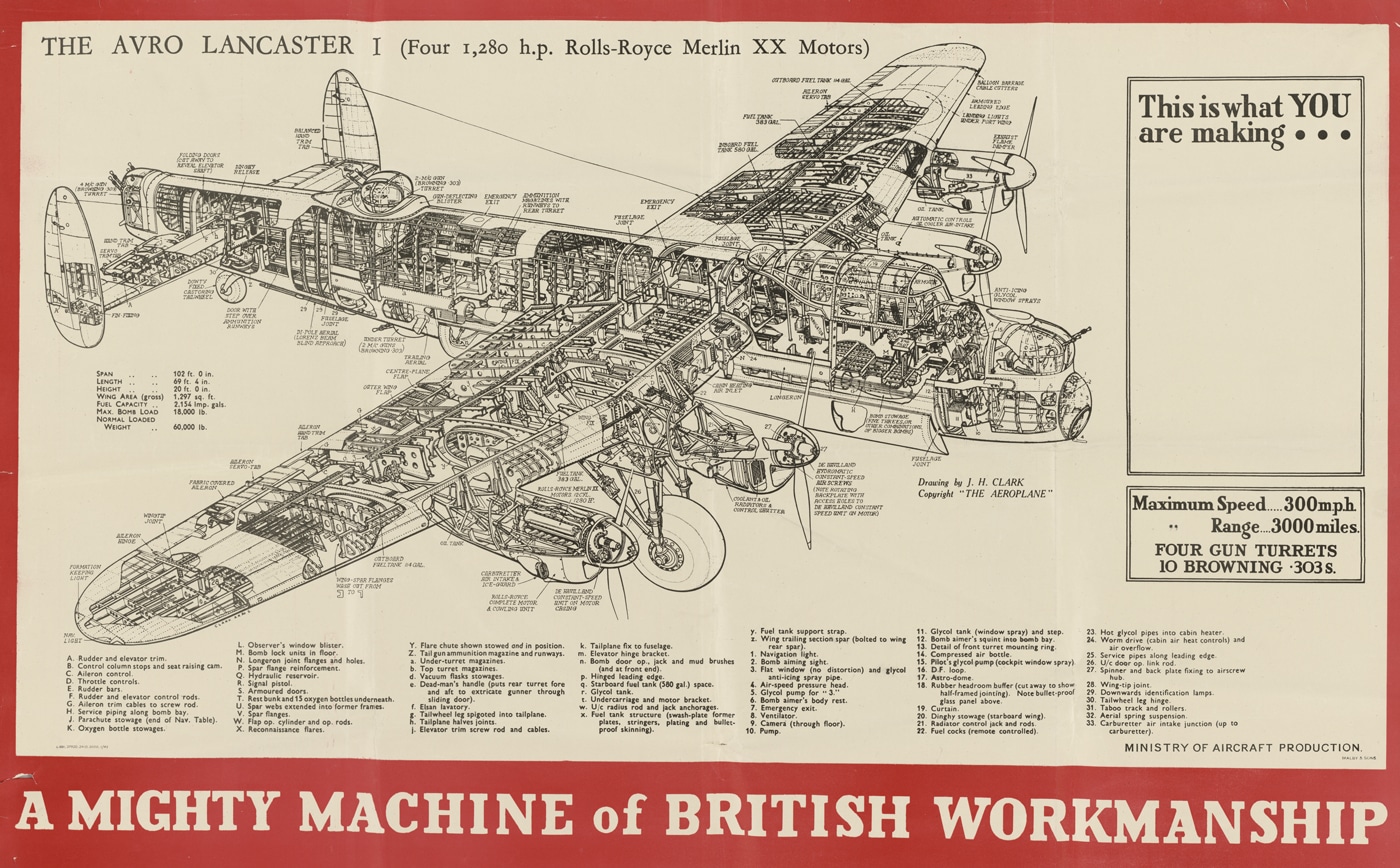
The Lancaster took the best of the Manchester, improved upon the design with new outer wing sections, and doubled the engines, which were also changed from the Vulture to the vastly superior Rolls-Royce Merlin engines. The design further evolved, with the three-fin tail altered to the now-famous higher twin-fin layout.
Other modifications were deemed necessary after the initial period of service. These included deletion of a ventral gun turret fitted to early production models, the addition of a larger Perspex bomb-aimer’s blister in the nose of the aircraft, and an increase in fuel capacity. Most notably, the Lancaster also received a bomb support system that allowed it to carry an 8,000-pound “Blockbuster” bomb.
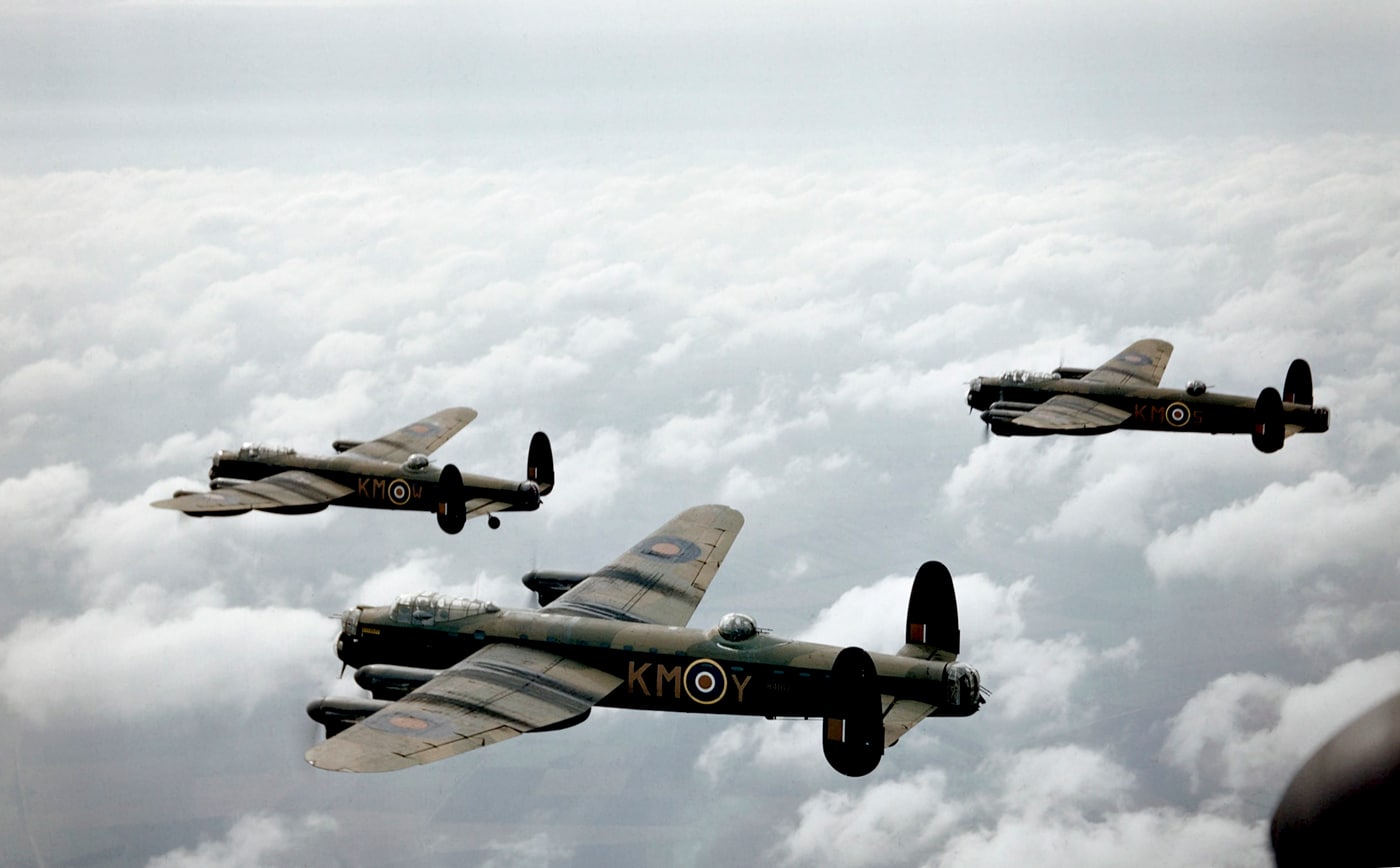
Defensive armament for the RAF’s Lancaster included three hydraulically operated Frazer-Nash turrets, each outfitted with twin Browning .303 Mark II machine guns, a variant of the M1919 Browning machine gun. In total, the bomber carried eight machine guns, making it the RAF’s flying castle!
Happy Christmas 1941
No. 44 (Rhodesia) Squadron, based at Waddington in the UK, received its initial Lancaster bombers in December 1941. It was likely a welcome Christmas present for the unit, which put the aircraft through the paces in the early weeks of 1942 before flying its first combat mission with the Lancaster on the night of March 10-11, 1942, in a raid on Essen.
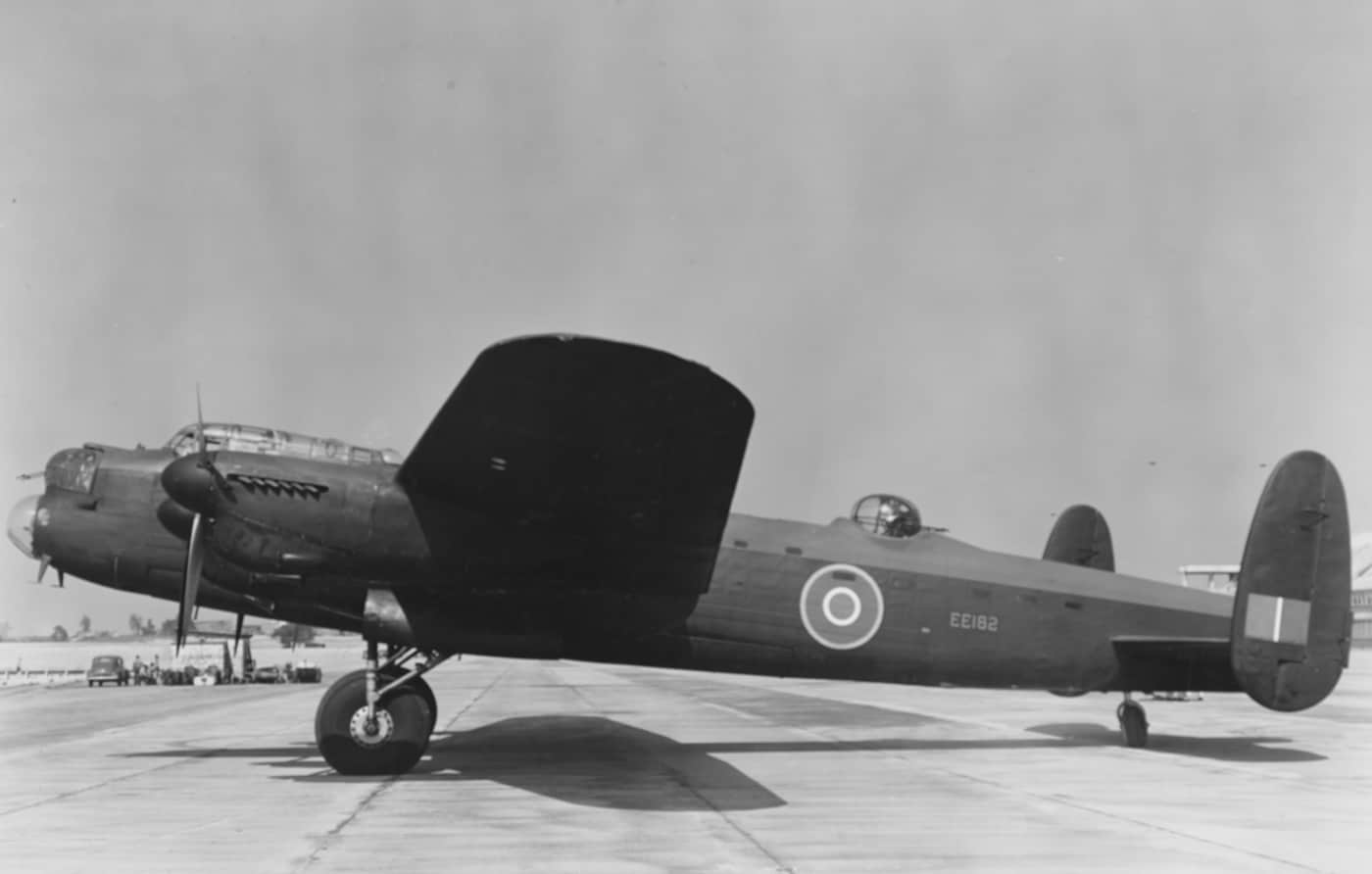
Just over a month later, it took part in the aforementioned raid at Augsburg. The aircrews had trained for several months, believing the attack would be on Germany’s naval facilities at Kiel, a relatively “easy” coastal target. It was only when the mission was formally announced that the RAF crews learned the mission called for striking a target deep in the heart of Nazi Germany.
Known as Operation Margin, it saw 12 Lancaster bombers under the command of Squadron Leader John D. Nettleton take off at 1400 hours, with the aircraft passing over the French coast at low level to avoid enemy radar detection. Encountering Messerschmitt Bf 109s, four of the dozen Lancasters were shot down before reaching the target area with more than 300 miles to go!
However, the eight remaining RAF aircraft continued on and successfully reached Augsburg. Flak was heavy, destroying one Lancaster as it approached the target, with three more bombers in total lost over Augsburg. The five survivors also took flak and were all damaged to varying degrees, yet they managed to limp back to the UK. Reconnaissance flights over the MAN factory revealed it had taken damage, albeit not as high as initially suggested.
The raid was costly, with 49 of the 85 crewmen shot down; 37 of them were killed and 12 taken prisoner. In addition to the seven Lancasters that didn’t return, one other was a total write-off. Yet, the raid was proof to Bomber Command (and to Berlin) that the RAF could reach distant targets in Germany.
Royal Air Force Workhorse Bomber
Like many other World War II aircraft, the Lancaster underwent steady upgrades and modifications throughout the war. As with other warplanes, the upgrades were the result of necessity as much as an actual improvement. That included the Lancaster Mk II, which was fitted with the more powerful Bristol Hercules radial powerplants. The decision was made due to shortages of the Rolls-Royce Merlin engines, and instead of increasing speed and altitude, the heavier engines resulted in extra drag on the airframe and greater fuel consumption.
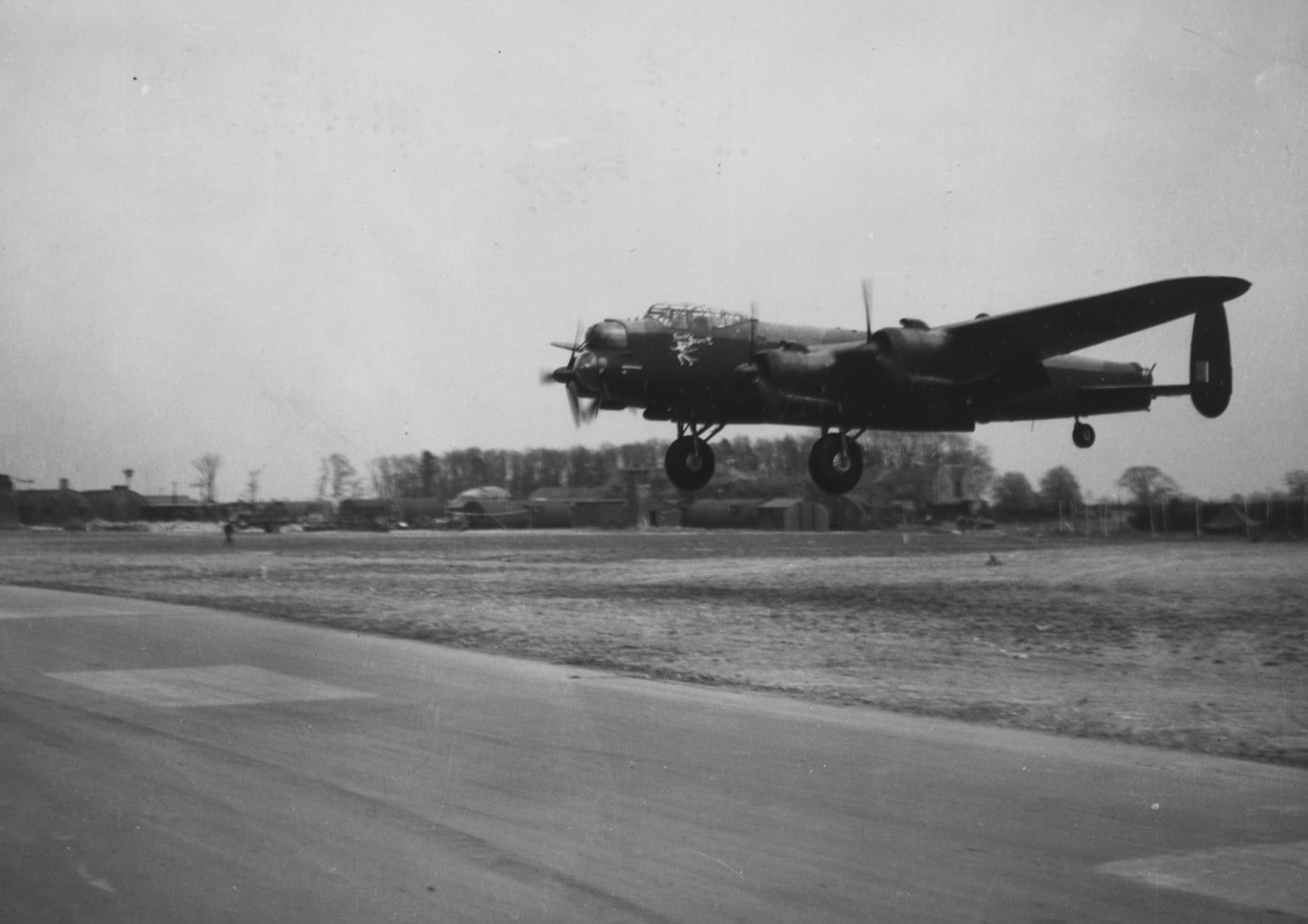
As Merlin supplies were secured, orders for additional Mk IIs were canceled. The Lancaster Mk III, powered by an American-built Packard-licensed Merlin engine, helped address the issue and required only minor changes from the Mk I variant. In fact, during the latter years of the war and into the post-war era, many Mk Is received the Packard engine, while Mk IIIs were fitted with the Rolls-Royce engine.
By the end of World War II, only the RAF’s Hawker Hurricane and Supermarine Spitfire were produced at a higher rate than the Lancaster. It proved to be just the aircraft the UK needed to bring the fight to the enemy.
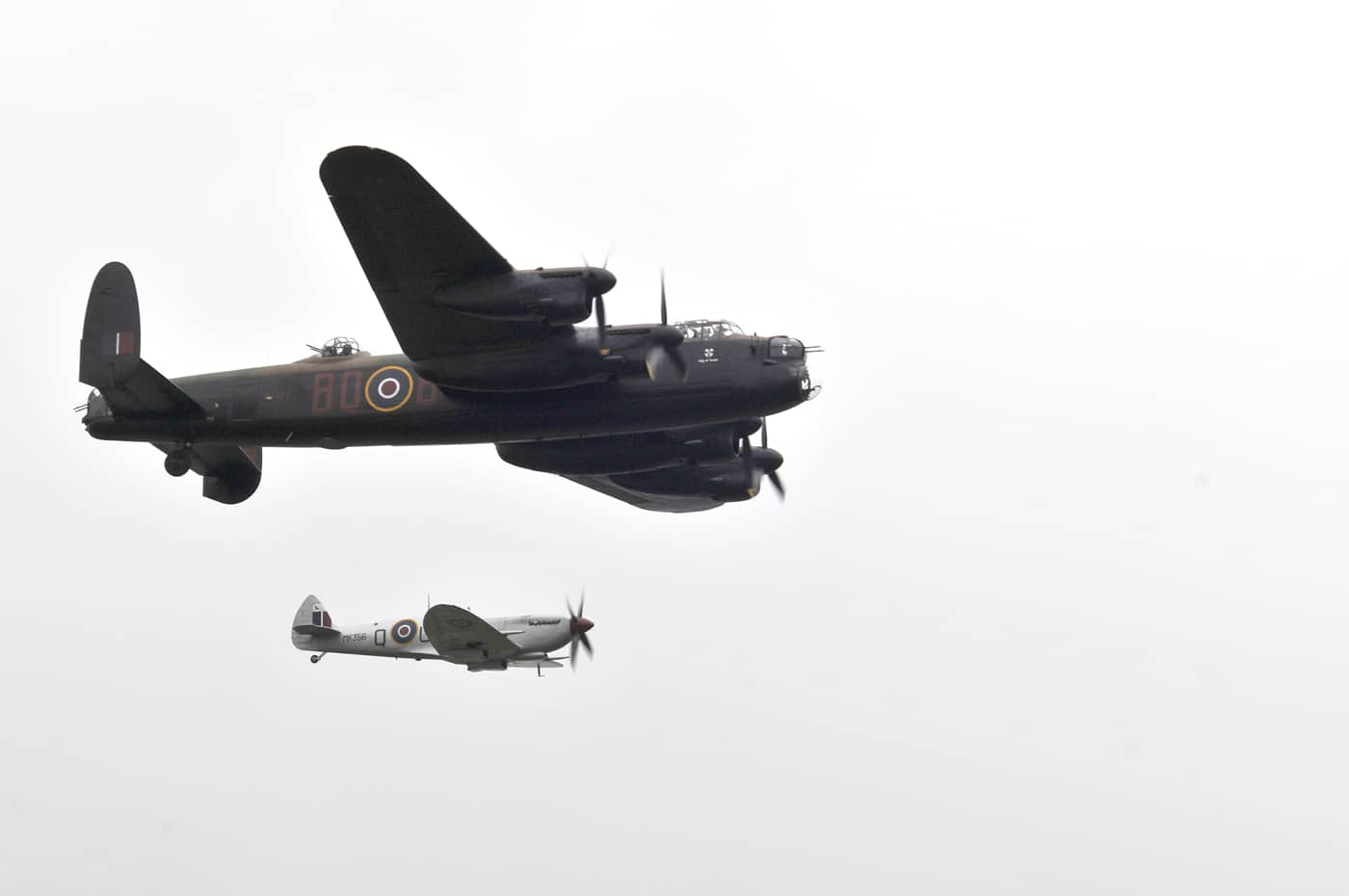
From mid-1942 until VE Day, the Lancaster was the RAF’s primary aircraft employed by Bomber Command in the nightly assaults on German targets. From March 1943, the Battle of the Ruhr sought to bring the Nazis to their knees by bombing Germany’s industry, while cities such as Hamburg and Berlin were also hit regularly.
Dambuster, Battleship Killer, and More
Beyond the nighttime bomb missions, the Lancaster was also employed in one of the spectacular missions carried out during the war. Known as Operation Chastise, it called for 19 Lancasters led by Wing Command Guy Gibson of 617 Squadron to destroy three dams in the Ruhr valley, the industrial heartland of Nazi Germany.
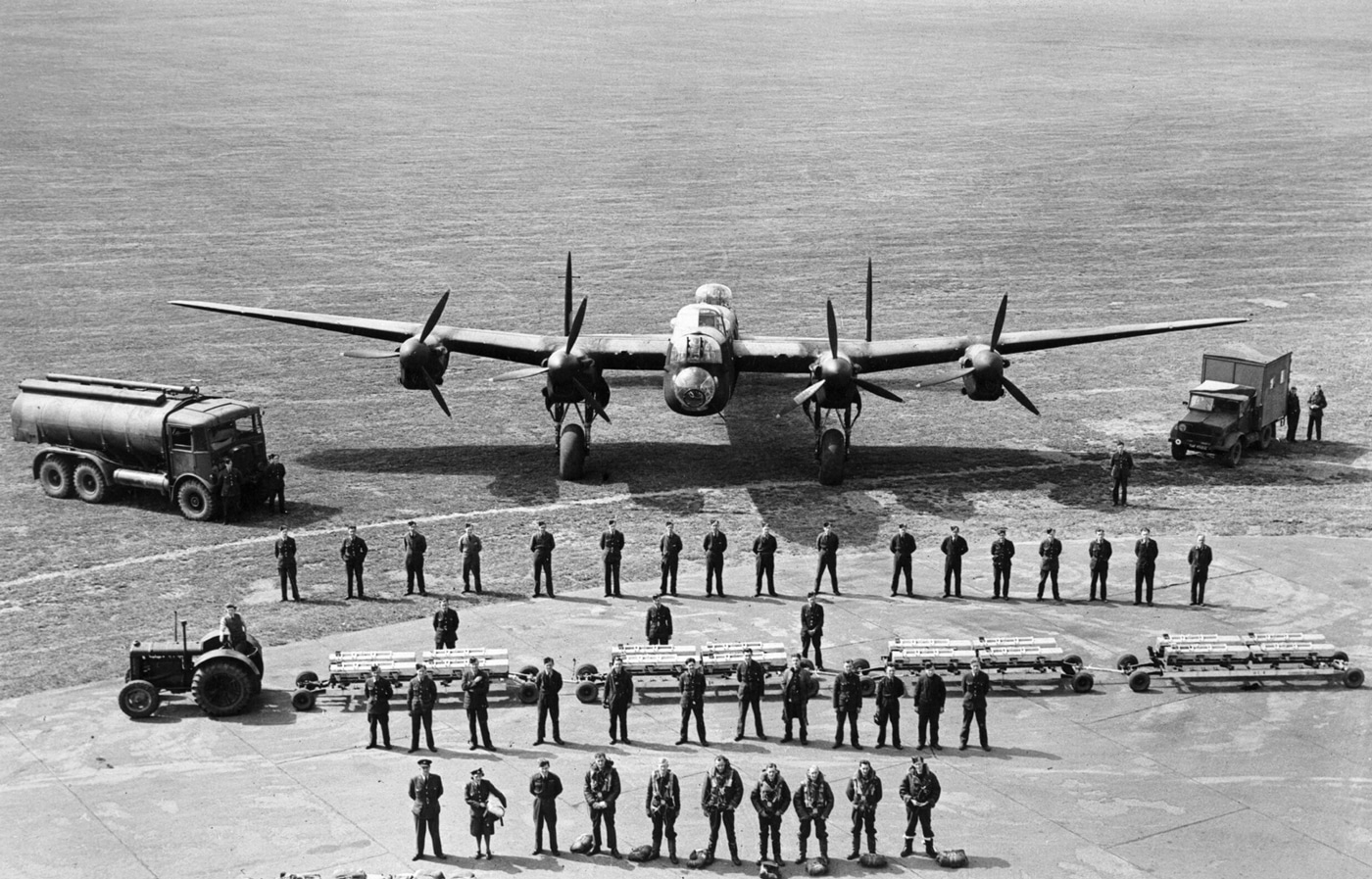
The raid required a special drum-shaped bomb, designed by Sir Barnes Wallis, which featured a rotating cylinder to create backspin. Weighing 9,231 pounds, the bomb (codenamed “Upkeep”) was meant to bounce across the water to strike the dam and then sink before detonating well below the surface. The raid required precision flying, with each bomber releasing the weapon between 370 and 410 meters (1,214 and 1,345 feet) from the target, while flying at 402 km/h (249 mph) and at just 18.3 meters (60 feet) above the water.
The difficult task of judging height at night over a flat surface was solved by fitting two search lights to the bomber’s fuselage. The lights were arranged to form a figure eight when the bomber was at a height of 60 feet. A simple V-shaped tool was also employed by the bomb-aimer at arm’s length in the bomber’s nose, and when the pegs corresponded to a pre-determined feature (like the towers on the dam), the aimer was able to conclude the correct distance.

Two of the dams were breached, while a third was lightly damaged. Much like the Augsburg raid, Operation Chastise was costly. Of the 19 Lancaster bombers, which had been modified to carry the special bomb, sent on the mission with 133 crewmen on board, eight aircraft failed to return, and 53 aircrews were killed and three taken prisoner. However, it was another major propaganda coup for the RAF, considered among the most daring aerial raids of the war!
But that was hardly the last daring mission for the Lancaster during the war.
After the raid on the dams, No. 617 Squadron carried 12,000-pound Tallboy bombs during Operation Hydra in August 1943, which was conducted against Germany’s Peenemünde Army Research Center, the site of the V-2 rocket and other German guided missiles and munitions. It was also a costly raid, with 23 Lancasters destroyed, along with 15 Halifaxes and two Stirlings, and historians have debated its success.
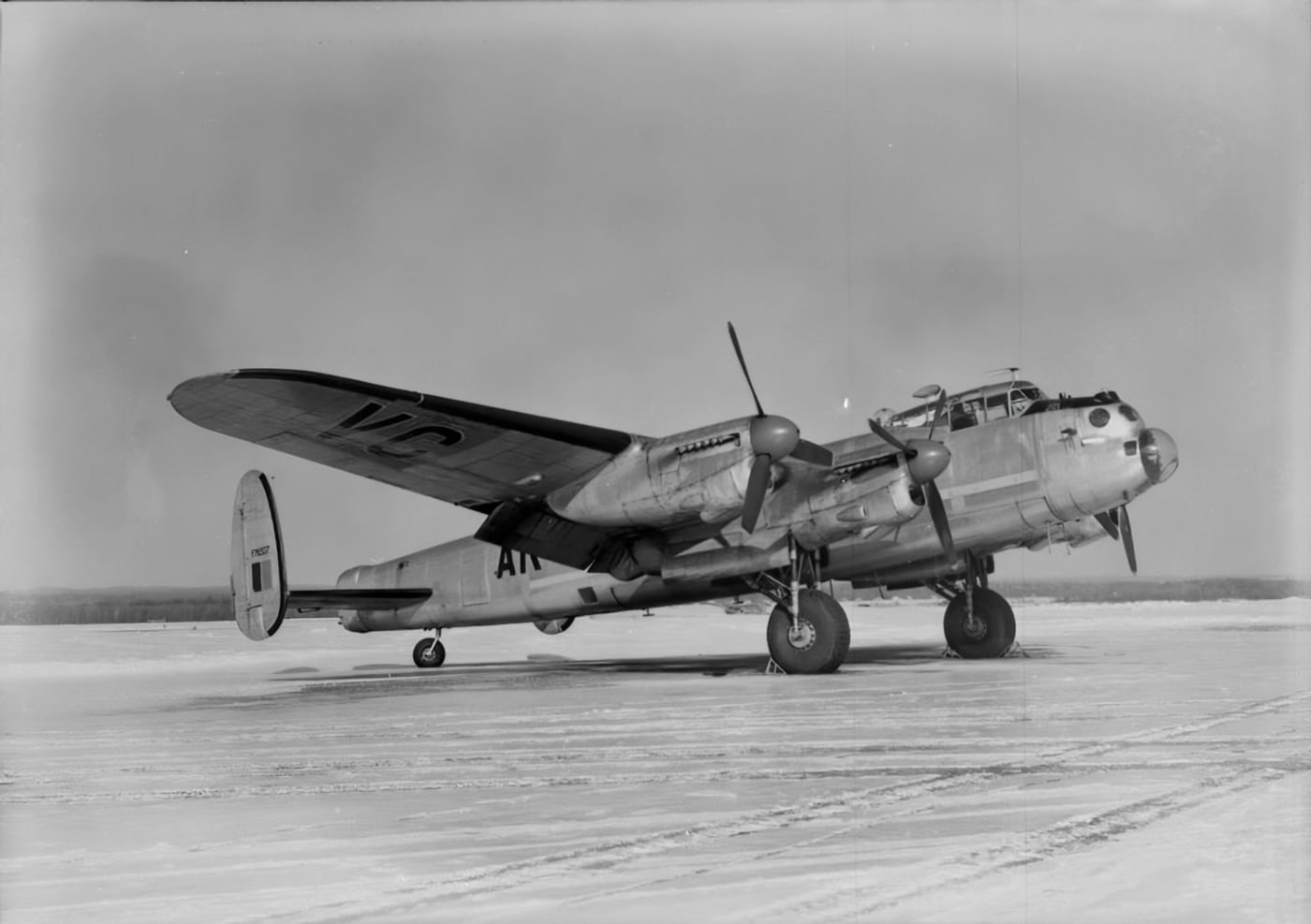
In 1944, No. 617 Squadron carried out a series of missions against the German battleship Tirpitz, the sister ship of the famed Bismarck, employing the Tallboy and even larger 22,000-pound Grand Slam bombs to sink the vessel. Other raids were carried out in 1945 to destroy the Kriegsmarine U-boat pens in Northern Germany, and to destroy various bridges in the final months of the war to slow German troop movements.
In total, Lancasters served with at least 59 Bomber Command squadrons during World War II, and flew more than 156,000 sorties, dropping 600,000 tons of high-explosive bombs and more than 50 million incendiaries. However, almost half of the Lancasters delivered during the war, 3,345 out of 7,373, were lost along with more than 21,000 crew members.
Legacy of the Lancaster
Like the American B-17 Flying Fortress and B-24 Liberator, the Lancaster was the bomber that helped win the war, but it was largely obsolete when the dust settled. The RAF officially retired the Avro Lancaster from operational service in October 1956, and by that time, it had been relegated to photographic, search and rescue, and maritime patrol duties.
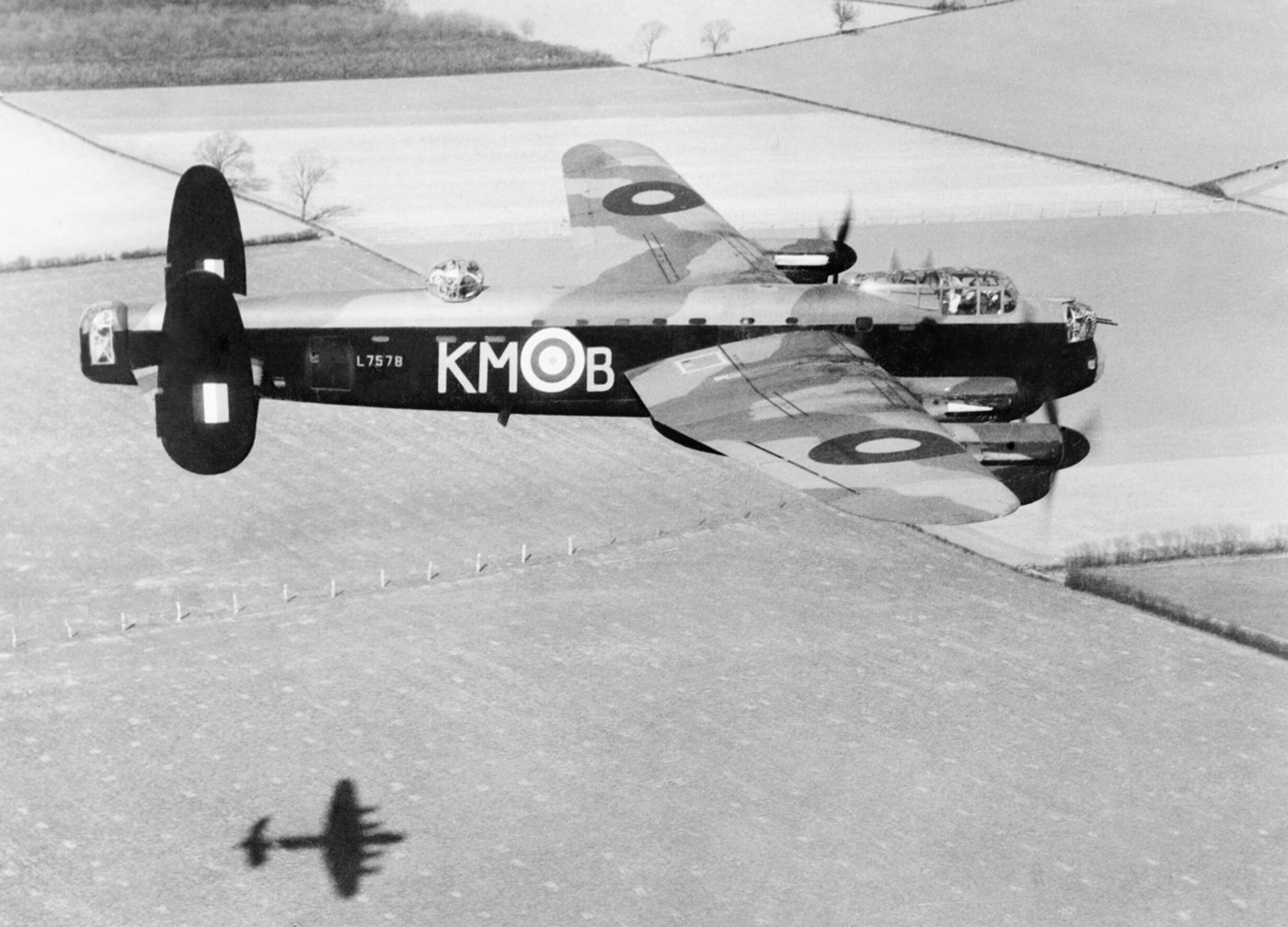
The Royal Canadian Air Force (RCAF), which flew many of the surviving Mk X Lancasters produced by Victory Aircraft in Canada, operated the aircraft in non-combat roles well into the 1960s. The last three RCAF Lancasters were only retired on April 1, 1964.
As noted, of the 17 that have survived, just two are airworthy.
Those include PA474, a Lancaster B. I fitted with the Rolls-Royce Merlin engines, operated by the Battle of Britain Memorial Flight; and FM213, a B.X operated by the Canadian Warplane Heritage Museum in Hamilton, Ontario. It is named the “Mynarski Memorial Lancaster,” and honors Canadian airman and Victoria Cross recipient for his wartime service. Mynarski died after attempting to help rescue a trapped crewman before parachuting out of his burning bomber.
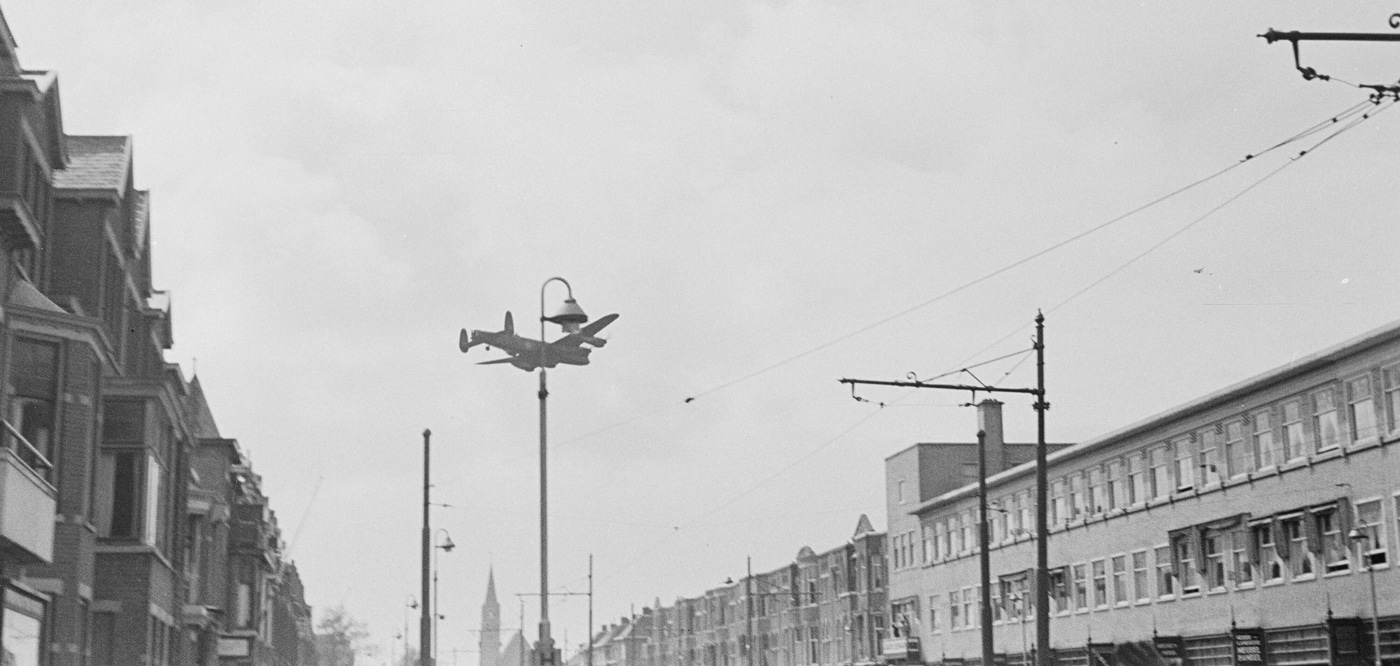
The remaining bombers are now on static display at museums in Australia, Canada, France, New Zealand, and the UK. An original Mk I is in the collection of the Royal Air Force Museum London, while a Victory Aircraft Mk X is at the Imperial War Museum Duxford. The Lincolnshire Aviation Heritage Centre has been working to restore another Mk VII to airworthiness.
Marshal of the Royal Air Force Arthur “Bomber” Harris was ordered to destroy Germany’s will to wage war, and the RAF’s Lancaster was the weapon he wielded to reach that end.
Editor’s Note: Please be sure to check out The Armory Life Forum, where you can comment about our daily articles, as well as just talk guns and gear. Click the “Go To Forum Thread” link below to jump in and discuss this article and much more!
Join the Discussion
Read the full article here









